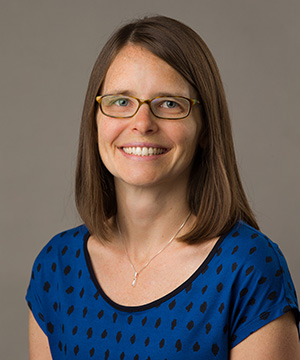WSU Professor Publishes book, ‘The Sex Offender Housing Dilemma’
OGDEN, Utah – “Not in my backyard,” (NIMBY) is not enough to explain a community’s negative response to a sexually violent predator moving into the neighborhood, according to a new book published by Weber State University criminal justice assistant professor Monica Williams.
In fact, blaming an angry citizen response on NIMBY places too much responsibility on the wrong group.
“The problem is when you assume it’s NIMBY, the solution is to blame the community: It’s their problem,” Williams explained. “Government administrators say citizens need to change their perspective. That’s the problem with NIMBY, it takes all the responsibility away from government and legal authorities, and I’m trying to put it back on the decision makers by looking at how their interactions with communities actually create the situations communities are responding to.”
 Williams was a graduate student in sociology at the University of California, Davis, when she began questioning and exploring why, under certain circumstances, people react with such passion and anger.
Williams was a graduate student in sociology at the University of California, Davis, when she began questioning and exploring why, under certain circumstances, people react with such passion and anger.
“I was thinking about the “Nancy Grace” show and how they blow everything up all the time,” Williams explained. “I was really curious how that happened and why that happened and what the real story was behind the sensationalism. That’s when I started looking at responses to sex offenders.”
She studied three California communities where sexually violent predators (SVPs) had been placed during their conditional releases from inpatient treatment in state hospitals. The three communities varied greatly: one a major metropolitan city, one a rural community of 200 residents, and one a semi-urban area with a large city 40 minutes away. In each community, citizens reacted angrily to the decision.
“A community’s reaction has a lot to do with their historical interactions with political and legal institutions,” Williams said. “Reactions stem from their history with people in those institutions and how much citizens trust and believe in the legitimacy of the institutions. They say, ‘You can’t just take an SVP and plop him in my community without my having some say.’”
Williams said in each case she studied, citizens were aware of and concerned about the perceived threat a sexually violent predator might pose, but what they were really angry about was being left out of the decision-making process.
“It basically comes down to a feeling that an injustice was done,” she said. “That’s not all because they were afraid. Citizens ask, ‘How could this happen? What was the process that resulted in this person coming here? And why didn’t I hear about it before the notification meeting, which was after the decision had already been made?’”
Officials need to involve citizens early in the process and respectfully listen to their assessment, concerns and suggestions. The same principle applies to any community that wants a successful outcome to a controversial decision.
“In political town hall meetings, people feel as if they go and state their opinions, but no one cares,” Williams said. “Governments are going to do what they want to do anyway. There has to be some sense of ‘OK, we attended a meeting, and when we attended the next meeting, we saw where our input impacted the plan.”
For expediency’s sake, administrators often place controversial individuals or groups in marginalized communities. Communities with low socioeconomic status have few resources and little political clout; therefore, they offer less long-term resistance. Williams said government and legal systems need to be accountable as they have helped create and reinforce inequalities between communities.
Decision makers need to have difficult conversations with communities, so citizens have an equal share in the burden of hosting difficult projects, groups or individuals, including SVPs.
“Government leaders could say, ‘Look, the legal system says this person has paid his debt, let’s consider where in the community it would make sense for him to live,” Williams said. “Having community members be part of that conversation can actually be very successful for communities, institutions and individuals. It has to be a more democratic process.”
Published by New York University Press in May 2018, “The Sex Offender Housing Dilemma” is available for sale online.
Visit weber.edu/wsutoday for more news about Weber State University.
Allison Barlow Hess, public relations director
801-626-7948 • ahess@weber.edu- Contact:
Monica Williams, criminal justice assistant professor
801-626-6231 • monicawilliams@weber.edu